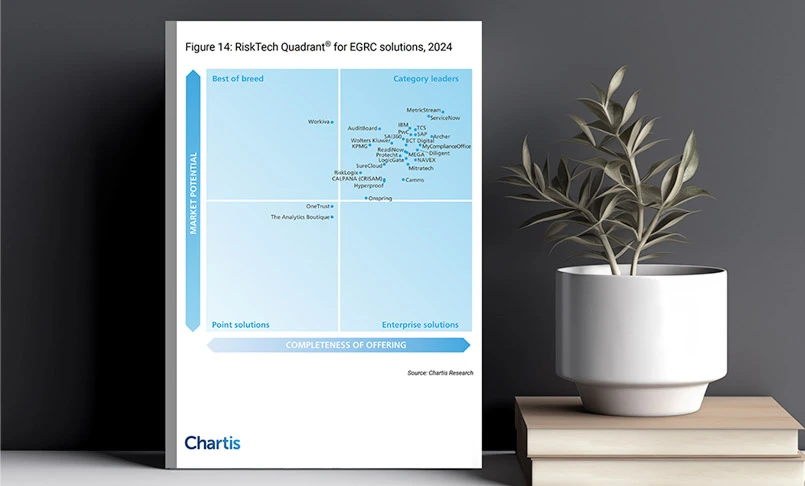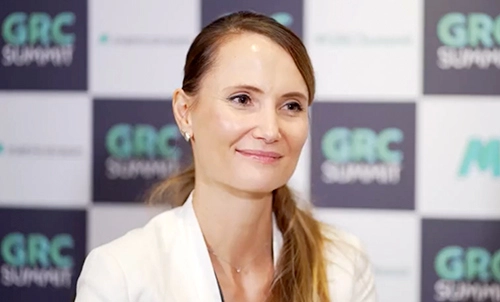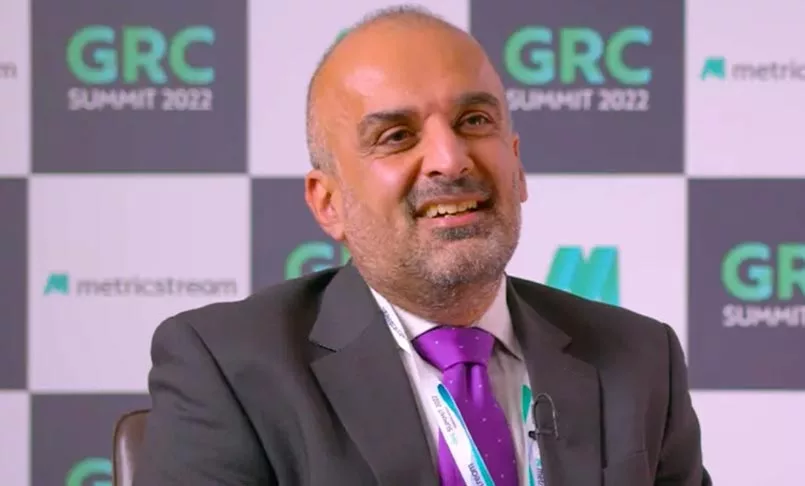Introduction
An internal control framework serves as the backbone of an organization’s risk management and operational efficiency. It ensures compliance with regulations, enhances accountability, and safeguards assets against potential fraud or misuse. For organizations striving to maintain transparency and efficiency, developing and implementing a robust internal control framework is crucial.
This guide delves into the nuances of internal control frameworks, providing a comprehensive overview for professionals aiming to establish, assess, or refine their systems.
Key Takeaways
- An internal control framework is essential for managing risks, ensuring operational efficiency, and maintaining compliance.
- Examples of frameworks, like the COSO internal control framework, highlight industry standards for effective implementation.
- Understanding the key components of an internal control framework helps in tailoring it to your organization’s needs.
- Building an effective framework involves a strategic approach, starting from risk assessment to regular monitoring.
What is an Internal Control Framework?
An internal control framework refers to a structured approach that organizations use to manage risks and achieve their objectives. It consists of policies, procedures, and practices designed to ensure operational efficiency, financial reporting reliability, and compliance with laws and regulations.
Why is an Internal Control Framework Important?
- Risk Mitigation: By identifying vulnerabilities and addressing them proactively, organizations can reduce exposure to operational, financial, and compliance risks.
- Regulatory Compliance: A robust framework ensures adherence to legal requirements, minimizing the likelihood of penalties or reputational damage.
- Operational Efficiency: Streamlined processes lead to better resource utilization, reducing redundancies and inefficiencies.
- Enhanced Trust: Transparency and accountability foster trust among stakeholders, including investors, employees, and customers.
Example of Internal Control Framework
Understanding real-world examples of internal control frameworks helps illustrate their practical application. One widely recognized framework is the COSO Internal Control Framework.
COSO Internal Control Framework
The COSO (Committee of Sponsoring Organizations of the Treadway Commission) framework is a globally recognized standard for designing, implementing, and evaluating internal controls. It comprises five interrelated components:
- Control Environment: Establishes the tone at the top, emphasizing integrity, ethical values, and the importance of internal controls.
- Risk Assessment: Involves identifying and analyzing risks that could hinder the achievement of objectives.
- Control Activities: These are specific actions—such as approvals, verifications, and reconciliations—designed to mitigate any potential identified risks.
- Information and Communication: Ensures that relevant information flows effectively within the organization.
- Monitoring Activities: Continuous evaluation and improvement of internal controls based on feedback.
Other Examples
- ISO 31000 Risk Management Framework: Though focused on risk management, this framework complements internal control efforts by providing a structured approach to managing risks.
- COBIT Framework: Commonly used in IT governance, the COBIT framework ensures alignment between technology and business objectives while embedding robust controls.
Components of Internal Control Framework
A well-designed internal control framework integrates several key components to ensure effectiveness. These components work together to create a cohesive system that mitigates risks and promotes organizational success. This include a control environment, risk assessment, control activities, information and communication, and the monitoring of activities. Each component is integral to creating a resilient framework that promotes governance and operational efficiency.
Control Environment
The control environment forms the foundation of the framework. It encompasses:
- Leadership’s Commitment: A strong tone at the top, promoting ethical behavior and accountability.
- Organizational Structure: Clear roles and responsibilities to avoid overlaps or gaps in authority.
- Code of Conduct: Policies outlining acceptable behavior and disciplinary measures to be followed.
Risk Assessment
Risk assessment is the process of identifying and analyzing potential threats to achieving organizational objectives. Key steps include:
- Identifying Risks: Reviewing internal and external factors that could impede objectives.
- Analyzing Impact: Assessing the severity and likelihood of each identified risk.
- Prioritizing Risks: Focusing on high-impact, high-likelihood risks.
Control Activities
These are specific actions implemented to mitigate risks and ensure smooth operations. Examples include:
- Segregation of Duties: Assigning responsibilities to prevent fraud or errors.
- Authorization Protocols: Requiring approvals for key transactions.
- Reconciliations: Regularly comparing records to identify any potential discrepancies that may arise.
Information and Communication
Effective information flow is critical to an internal control framework. This involves:
- Accessible Documentation: Policies, procedures, and reports should be readily available.
- Timely Reporting: Ensuring relevant information reaches decision-makers promptly.
- Feedback Mechanisms: Channels for employees to report issues or suggest improvements.
Monitoring Activities
Monitoring ensures the framework remains effective over time. This includes:
- Regular Audits: Independent reviews to evaluate the framework’s performance.
- Ongoing Assessments: Continuous monitoring through internal checks.
- Corrective Actions: Addressing identified weaknesses promptly.
How to Build an Internal Control Framework Effectively?
Building an effective internal control framework requires a systematic approach tailored to an organization’s specific needs and objectives. Below are key steps to guide the process.
Step 1: Understand Organizational Objectives
Start by clearly defining your organization’s goals and priorities. Understanding these objectives provides a foundation for aligning the internal control framework with broader organizational strategies.
- Strategic Goals: Focus on long-term aspirations, such as market expansion or innovation.
- Operational Goals: Address day-to-day efficiency and resource optimization.
- Compliance Goals: Ensure adherence to legal and regulatory requirements.
Step 2: Conduct a Risk Assessment
Identify and evaluate potential risks that could hinder your objectives. Use tools like risk matrices or SWOT analyses to categorize and prioritize risks.
- Internal Risks: Employee errors, system failures, or fraud.
- External Risks: Market fluctuations, regulatory changes, or cyber threats.
Step 3: Design Control Activities
Develop specific measures to address identified risks. This involves creating policies, procedures, and systems that:
- Reduce the likelihood of errors or fraud.
- Ensure compliance with regulations.
- Promote operational efficiency.
Step 4: Establish a Communication Plan
Ensure that all stakeholders are aware of the internal control framework and their roles within it. Key actions include:
- Conducting training sessions for employees.
- Developing user-friendly documentation.
- Creating feedback mechanisms for continuous improvement.
Step 5: Implement Monitoring Mechanisms
Establish systems to continuously evaluate the framework’s effectiveness. This includes:
- Assigning responsibilities for monitoring activities.
- Using key performance indicators (KPIs) to measure success.
- Scheduling regular reviews and audits.
Step 6: Review and Improve
Internal controls are not static; they must evolve with changing organizational needs and external environments. Periodic reviews ensure relevance and effectiveness.
- Incorporate feedback from audits and employee input.
- Update controls to address emerging risks.
- Benchmark against industry best practices.
Why MetricStream?
An effective internal control framework is pivotal for organizational success. By providing structure, accountability, and transparency, it minimizes risks and enhances operational efficiency. Frameworks like COSO offer valuable guidelines, but organizations must tailor their approach to fit specific needs and objectives.
Building a robust internal control framework is a continuous journey that requires commitment, adaptability, and collaboration. With a clear understanding of its components and a strategic approach to implementation, organizations can create a resilient system that drives long-term success.
For organizations aiming to strengthen their internal control frameworks, MetricStream’s BusinessGRC solution suite is designed to simplify the management of evolving risks and regulatory demands while ensuring a strong internal control environment. For more information, request a personalized demo.
Frequently Asked Questions
What is an internal controls framework?
The internal controls framework is a structured system of policies, procedures, and practices designed to help organizations manage risks, ensure operational efficiency, and maintain compliance with legal and regulatory requirements.
What are the 5 frameworks of COSO?
The five components of the COSO framework are the control environment, risk assessment, control activities, information and communication, and monitoring, which together form the foundation for effective internal control systems.
An internal control framework serves as the backbone of an organization’s risk management and operational efficiency. It ensures compliance with regulations, enhances accountability, and safeguards assets against potential fraud or misuse. For organizations striving to maintain transparency and efficiency, developing and implementing a robust internal control framework is crucial.
This guide delves into the nuances of internal control frameworks, providing a comprehensive overview for professionals aiming to establish, assess, or refine their systems.
- An internal control framework is essential for managing risks, ensuring operational efficiency, and maintaining compliance.
- Examples of frameworks, like the COSO internal control framework, highlight industry standards for effective implementation.
- Understanding the key components of an internal control framework helps in tailoring it to your organization’s needs.
- Building an effective framework involves a strategic approach, starting from risk assessment to regular monitoring.
An internal control framework refers to a structured approach that organizations use to manage risks and achieve their objectives. It consists of policies, procedures, and practices designed to ensure operational efficiency, financial reporting reliability, and compliance with laws and regulations.
- Risk Mitigation: By identifying vulnerabilities and addressing them proactively, organizations can reduce exposure to operational, financial, and compliance risks.
- Regulatory Compliance: A robust framework ensures adherence to legal requirements, minimizing the likelihood of penalties or reputational damage.
- Operational Efficiency: Streamlined processes lead to better resource utilization, reducing redundancies and inefficiencies.
- Enhanced Trust: Transparency and accountability foster trust among stakeholders, including investors, employees, and customers.
Understanding real-world examples of internal control frameworks helps illustrate their practical application. One widely recognized framework is the COSO Internal Control Framework.
COSO Internal Control Framework
The COSO (Committee of Sponsoring Organizations of the Treadway Commission) framework is a globally recognized standard for designing, implementing, and evaluating internal controls. It comprises five interrelated components:
- Control Environment: Establishes the tone at the top, emphasizing integrity, ethical values, and the importance of internal controls.
- Risk Assessment: Involves identifying and analyzing risks that could hinder the achievement of objectives.
- Control Activities: These are specific actions—such as approvals, verifications, and reconciliations—designed to mitigate any potential identified risks.
- Information and Communication: Ensures that relevant information flows effectively within the organization.
- Monitoring Activities: Continuous evaluation and improvement of internal controls based on feedback.
Other Examples
- ISO 31000 Risk Management Framework: Though focused on risk management, this framework complements internal control efforts by providing a structured approach to managing risks.
- COBIT Framework: Commonly used in IT governance, the COBIT framework ensures alignment between technology and business objectives while embedding robust controls.
A well-designed internal control framework integrates several key components to ensure effectiveness. These components work together to create a cohesive system that mitigates risks and promotes organizational success. This include a control environment, risk assessment, control activities, information and communication, and the monitoring of activities. Each component is integral to creating a resilient framework that promotes governance and operational efficiency.
Control Environment
The control environment forms the foundation of the framework. It encompasses:
- Leadership’s Commitment: A strong tone at the top, promoting ethical behavior and accountability.
- Organizational Structure: Clear roles and responsibilities to avoid overlaps or gaps in authority.
- Code of Conduct: Policies outlining acceptable behavior and disciplinary measures to be followed.
Risk Assessment
Risk assessment is the process of identifying and analyzing potential threats to achieving organizational objectives. Key steps include:
- Identifying Risks: Reviewing internal and external factors that could impede objectives.
- Analyzing Impact: Assessing the severity and likelihood of each identified risk.
- Prioritizing Risks: Focusing on high-impact, high-likelihood risks.
Control Activities
These are specific actions implemented to mitigate risks and ensure smooth operations. Examples include:
- Segregation of Duties: Assigning responsibilities to prevent fraud or errors.
- Authorization Protocols: Requiring approvals for key transactions.
- Reconciliations: Regularly comparing records to identify any potential discrepancies that may arise.
Information and Communication
Effective information flow is critical to an internal control framework. This involves:
- Accessible Documentation: Policies, procedures, and reports should be readily available.
- Timely Reporting: Ensuring relevant information reaches decision-makers promptly.
- Feedback Mechanisms: Channels for employees to report issues or suggest improvements.
Monitoring Activities
Monitoring ensures the framework remains effective over time. This includes:
- Regular Audits: Independent reviews to evaluate the framework’s performance.
- Ongoing Assessments: Continuous monitoring through internal checks.
- Corrective Actions: Addressing identified weaknesses promptly.
Building an effective internal control framework requires a systematic approach tailored to an organization’s specific needs and objectives. Below are key steps to guide the process.
Step 1: Understand Organizational Objectives
Start by clearly defining your organization’s goals and priorities. Understanding these objectives provides a foundation for aligning the internal control framework with broader organizational strategies.
- Strategic Goals: Focus on long-term aspirations, such as market expansion or innovation.
- Operational Goals: Address day-to-day efficiency and resource optimization.
- Compliance Goals: Ensure adherence to legal and regulatory requirements.
Step 2: Conduct a Risk Assessment
Identify and evaluate potential risks that could hinder your objectives. Use tools like risk matrices or SWOT analyses to categorize and prioritize risks.
- Internal Risks: Employee errors, system failures, or fraud.
- External Risks: Market fluctuations, regulatory changes, or cyber threats.
Step 3: Design Control Activities
Develop specific measures to address identified risks. This involves creating policies, procedures, and systems that:
- Reduce the likelihood of errors or fraud.
- Ensure compliance with regulations.
- Promote operational efficiency.
Step 4: Establish a Communication Plan
Ensure that all stakeholders are aware of the internal control framework and their roles within it. Key actions include:
- Conducting training sessions for employees.
- Developing user-friendly documentation.
- Creating feedback mechanisms for continuous improvement.
Step 5: Implement Monitoring Mechanisms
Establish systems to continuously evaluate the framework’s effectiveness. This includes:
- Assigning responsibilities for monitoring activities.
- Using key performance indicators (KPIs) to measure success.
- Scheduling regular reviews and audits.
Step 6: Review and Improve
Internal controls are not static; they must evolve with changing organizational needs and external environments. Periodic reviews ensure relevance and effectiveness.
- Incorporate feedback from audits and employee input.
- Update controls to address emerging risks.
- Benchmark against industry best practices.
An effective internal control framework is pivotal for organizational success. By providing structure, accountability, and transparency, it minimizes risks and enhances operational efficiency. Frameworks like COSO offer valuable guidelines, but organizations must tailor their approach to fit specific needs and objectives.
Building a robust internal control framework is a continuous journey that requires commitment, adaptability, and collaboration. With a clear understanding of its components and a strategic approach to implementation, organizations can create a resilient system that drives long-term success.
For organizations aiming to strengthen their internal control frameworks, MetricStream’s BusinessGRC solution suite is designed to simplify the management of evolving risks and regulatory demands while ensuring a strong internal control environment. For more information, request a personalized demo.
What is an internal controls framework?
The internal controls framework is a structured system of policies, procedures, and practices designed to help organizations manage risks, ensure operational efficiency, and maintain compliance with legal and regulatory requirements.
What are the 5 frameworks of COSO?
The five components of the COSO framework are the control environment, risk assessment, control activities, information and communication, and monitoring, which together form the foundation for effective internal control systems.








